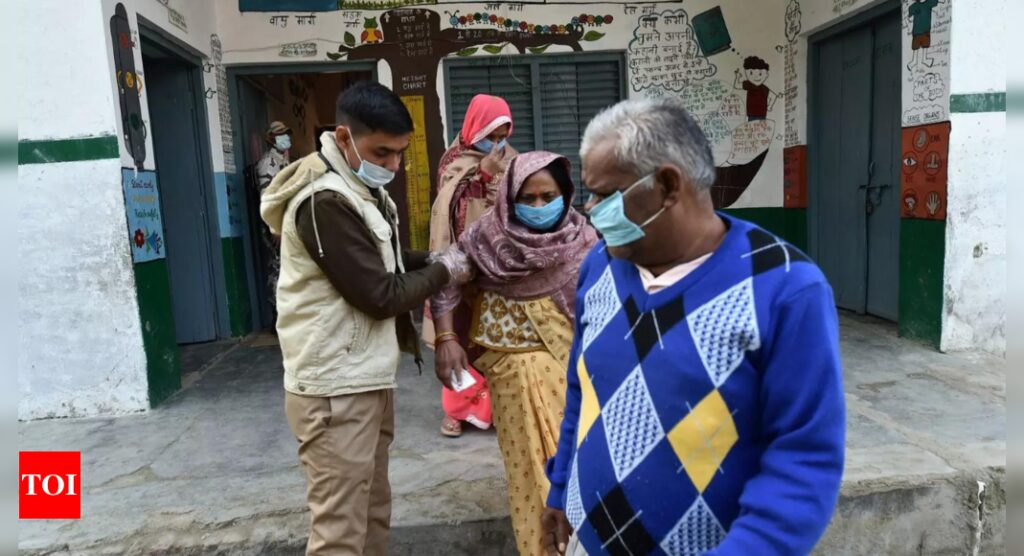[ad_1]
NEW Data from a recent UN report highlights the incidence of widowhood among elderly as a critical indicator of vulnerability in society. Pointing that the loss of a spouse in old age adds significant vulnerability to the life of the surviving partner, the report brings into focus the incidence of widowhood and higher life expectancy among older women – a key demographic characteristic in India.
Moreover, the United Nations Population Fund (UNFPA) in its ‘India Ageing Report -2023’, released ahead of the ‘International Day of Older Persons’ observed each year on October 1, highlights that as fewer women work and earn less in comparison to men, there are acute poverty impacts associated with the “feminsation of the aged” which will require the attention of policy makers, it is stated.
Drawing from the Longitudinal Ageing Survey of India (LASI 2017/18 wave – 1), the report shows that 54% of women over 60 years were widowed compared to 16% men. The gender differential in the incidence of widowhood is seen to increase in higher age groups with 87% of women of 80 and above being widowed as opposed to only 37% men. The LASI was a nationwide survey-based scientific investigation of the health, economic, and social determinants and consequences of population ageing in India covering 31,464 older persons.
The report also draws from the Census 2011 which shows that nearly 66% of those over 60 were ‘currently married’, 32% were widowed and about 3% were separated or divorced. However, gender differentials were significant with 82% of older men (as compared to 50%of older women) being currently married. The incidence of widowhood was thus much higher among women (48%) as compared to men (15%).
It is highlighted that poverty is inherently gendered in old age when older women are more likely to be widowed, living alone, with no income and with fewer assets of their own, and fully dependent on family for support. This concern becomes even more critical as the data on life expectancy shows that at 60 years, a female in India may expect to live 19 years as compared to males at 17.5 years. This brings into focus the issue of “feminisation of ageing” reflecting the extra life years survived by elderly females (as compared to males) at the age of 60 years.
The report also brings into focus the changing landscape of the traditional living arrangements in India. While the majority of the elderly are still living with their adult children in India, about one-fifth either live alone or only with their spouse. About one in five elderly men and one in eight elderly women lived exclusively with their spouse.
Moreover, the United Nations Population Fund (UNFPA) in its ‘India Ageing Report -2023’, released ahead of the ‘International Day of Older Persons’ observed each year on October 1, highlights that as fewer women work and earn less in comparison to men, there are acute poverty impacts associated with the “feminsation of the aged” which will require the attention of policy makers, it is stated.
Drawing from the Longitudinal Ageing Survey of India (LASI 2017/18 wave – 1), the report shows that 54% of women over 60 years were widowed compared to 16% men. The gender differential in the incidence of widowhood is seen to increase in higher age groups with 87% of women of 80 and above being widowed as opposed to only 37% men. The LASI was a nationwide survey-based scientific investigation of the health, economic, and social determinants and consequences of population ageing in India covering 31,464 older persons.
The report also draws from the Census 2011 which shows that nearly 66% of those over 60 were ‘currently married’, 32% were widowed and about 3% were separated or divorced. However, gender differentials were significant with 82% of older men (as compared to 50%of older women) being currently married. The incidence of widowhood was thus much higher among women (48%) as compared to men (15%).
It is highlighted that poverty is inherently gendered in old age when older women are more likely to be widowed, living alone, with no income and with fewer assets of their own, and fully dependent on family for support. This concern becomes even more critical as the data on life expectancy shows that at 60 years, a female in India may expect to live 19 years as compared to males at 17.5 years. This brings into focus the issue of “feminisation of ageing” reflecting the extra life years survived by elderly females (as compared to males) at the age of 60 years.
The report also brings into focus the changing landscape of the traditional living arrangements in India. While the majority of the elderly are still living with their adult children in India, about one-fifth either live alone or only with their spouse. About one in five elderly men and one in eight elderly women lived exclusively with their spouse.
[ad_2]
Source link











More Stories
Congress replaces Kamal Nath, names an OBC as Madhya Pradesh chief | India News
Fire breaks out in ITBP camp in Srinagar; none hurt | India News
Parliament Security: Co-villagers give clean chit to Lalit Jha, parents to move court | India News